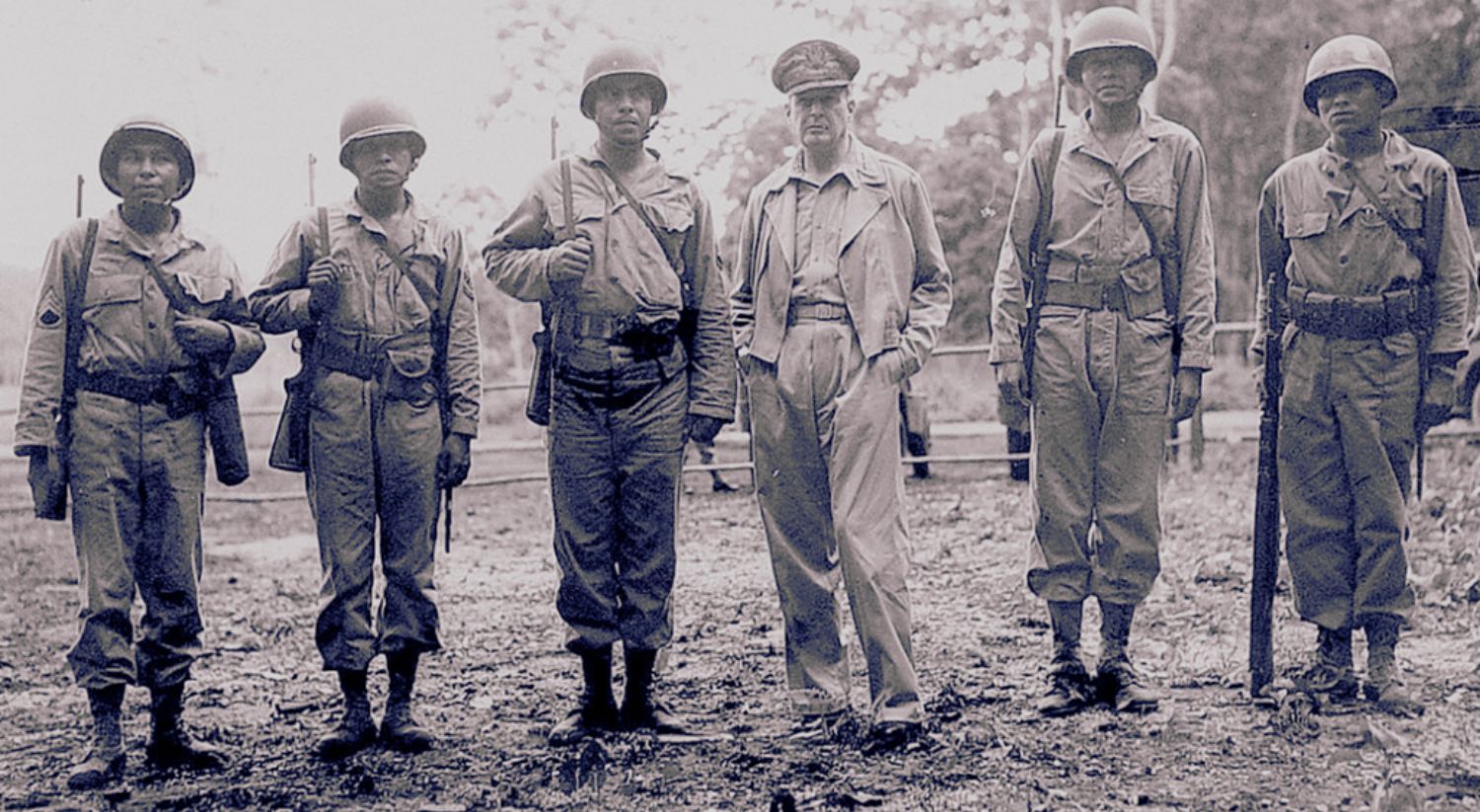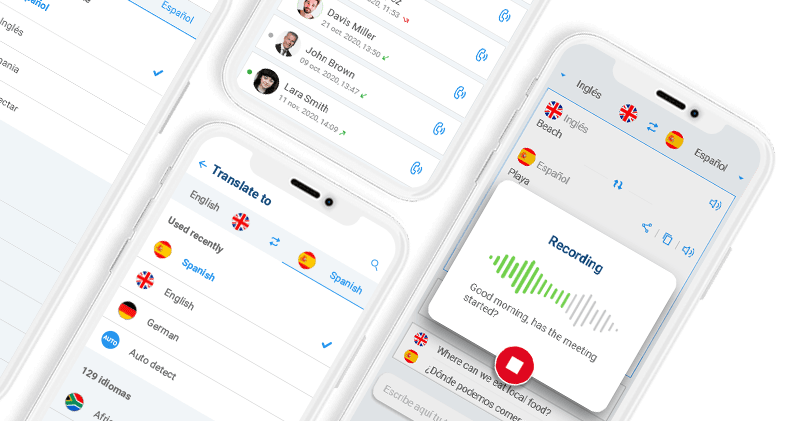
Today, we’re diving into a fascinating topic: words that have no translation. At least, not in the same way or with the same usage. If you’re learning a new language, it’s perfectly natural to look up every unfamiliar word in the dictionary. You instinctively try to relate every term to your native language so you can make sense of it.
However, in this process, you’ll eventually come across certain words that simply can’t be translated word-for-word.
That doesn’t mean these words are strange or lack universal relevance—not at all! It’s just that their meaning, length, intonation, and application can change drastically when you try to translate them. Sometimes, a single word in one language captures what takes a full sentence to express in another. Sometimes, these words refer to concepts, objects, places, or situations that are deeply rooted in a specific culture—and completely unfamiliar to others.
Another curious phenomenon is that some of these “untranslatable” words are used so commonly, we treat them as if they were part of our own language—without realizing they’re borrowed. And maybe… you didn’t even know!
So today, let’s uncover the mystery behind those unique words that can’t be easily translated.
Why are there words that have no translation?
Truthfully, few linguists can offer a solid and universally accepted explanation for this phenomenon. Some argue that untranslatable words exist due to the regionalization of language—that is, the natural tendency of languages to become deeply rooted in specific regions.
According to these experts, language is both a cultural and anthropological phenomenon, closely intertwined with the customs and traditions of the people who speak it.
In other words, language is created by people and for people. It’s a tool for communication and self-expression. Therefore, it’s only natural that many words have evolved as a way to describe uniquely local experiences or events. These words often become so deeply tied to specific cultural or environmental contexts that they simply can’t be exported or translated to other regions with the same impact or meaning.
Let’s imagine, for example, an Inuit person from the Arctic Circle region of North America. Do you think they would have a word that refers to “sunbathing on a beach”? Or, on the flip side, would a Yoruba speaker have a term for “blizzard conditions”?
That’s where part of the explanation lies. But… is it the only reason? Definitely not. Let’s explore some other interesting factors.
Language as a unique cultural symbol
We recently touched on this topic in our post about linguistic curiosities. Interestingly, some anthropologists argue that language is the result of social evolution—an evolved expression of the processes that shape societies. In other words, language doesn’t emerge from a group of scholars crafting vocabulary in isolation. Rather, it’s a dynamic process that evolves alongside the people who speak it.
Think for a moment about your own language. Whether you speak Spanish, English, or Swedish, it’s likely that your accent, speech speed, and even your tone differ from someone else in your country—maybe even someone just a few kilometers away. This is especially common in languages imposed by colonial empires. Here’s why.
Linguistic imposition and language “rebellion”
It’s happened with Latin, Mandarin, English, French, and Spanish. The colonizing power imposes a language on the local population. But, perhaps out of resistance or a desire to preserve cultural identity, the people rarely adopt 100% of this “new” language. If you look at your own language, this becomes very clear.
And you don’t even need to leave England. For example, Scottish English has its own identity as well as English spoken in other regions of the island. Moreover, if you travel around the “English World” you’ll find very marked differences between Australian or Caribbean English.
However, in terms of the language itself, those words that have no translation have been integrated. Think about your common use vocabulary. Can you identify some words that are not “original”? Surely not. Let’s see some examples.
What are some of these words?
Here’s a simple example of a conversation you might hear at any restaurant right now:
“What would you like to eat?”
“I’ll have corn bread with tomato and barbecue tuna. Also bring me some nachos with guacamole, and a hot chocolate, please.”
Without realizing it, you’ve used more native words than you probably think. None of these words existed before Europeans arrived in the “New World.” Here are some very common untranslatable words from America:
- Chocolate
- Avocado
- Canoe
- Corn
- Tobacco
- Hurricane
- Coyote
- Cocoa
- Tuna
- Tomato
This simple example shows that no language—no matter how formal or academic—can escape outside influence. Language is constantly shaped by the social realities that keep it alive and evolving. And there’s more…

Languages as products of blending
Yes, it may sound illogical, but it’s undeniably true. All languages are enriched through contact with others. In most cases, this growth comes thanks to words that have no translation.
Throughout the fascinating process of transculturation, societies inevitably learn from one another. Whether intentionally or not, contact between cultures creates a kind of osmosis—an exchange that absorbs parts of each culture, including language.
Every language has words that have no translation, so they were simply adopted. These untranslatable words often express emotions, concepts, or ways of life that don’t exist elsewhere. They can also refer to products or objects that were unknown in the language’s early form.
Words like yoga, coffee, kiosk, or cocoa were once foreign and couldn’t be translated accurately. Let’s take a look at some fascinating examples of untranslatable words you use every day.

The most universal words that have no translation
No matter how hard you try to find a “pure” way to express certain words in your native language, sometimes it’s just impossible. Take karate, for example. Sure, you could say “Japanese martial art,” but that lumps it together with dozens of other fighting styles. Or maybe call it a “sporting discipline,” but that still doesn’t quite capture it. The most practical and accurate thing to do is simply to call it karate—and that’s it.
This happens more often than you think. Many words you use every day actually come from other languages, even if you assume they’re native to your own. Don’t believe it? Take a closer look at some of the most universal untranslatable words from around the world:
Saudade (Portuguese)
A deep, emotional mix of nostalgia, love, and longing for something or someone absent. It’s not just “missing” someone—it’s feeling it in your soul. Try translating it literally, and you’ll always come up short.
Schadenfreude (German)
That guilty pleasure you feel when witnessing someone else’s misfortune. We’ve all experienced it—even if we don’t want to admit it. But few languages have a single word for it.
Komorebi (Japanese)
This poetic term refers to sunlight filtering through the leaves of trees. The Japanese language excels at condensing beautiful imagery into a single word—and this is a perfect example.
Tingo (Rapa Nui)
From the language of Easter Island, tingo describes the act of borrowing things little by little until you’ve emptied someone else’s house. A very specific—and almost comical—concept.
Jayus (Indonesian)
A joke so poorly told or so bad that it’s impossible not to laugh. A gem of unintentional humor and one of the quirkiest untranslatable words.
Gigil (Filipino)
That overwhelming urge to squeeze or pinch something incredibly cute—like a baby or a puppy. A pure emotional reaction without a perfect translation.
Hygge (Danish)
A cozy feeling of comfort, warmth, and well-being—often accompanied by candlelight, good food, and even better company. One of Denmark’s most famous lifestyle concepts.
Wabi-Sabi (Japanese)
A world view that finds beauty in imperfection, simplicity, and the transient nature of life. Wabi-sabi embraces the natural and the unfinished.
Dépaysement (French)
The feeling of disorientation in a completely new or foreign environment. It’s not just being lost—it’s the sensation of not belonging.
Yuanfen (Traditional Chinese)
A concept of fate or predestined connection between two people—even if they never end up together. Deep, philosophical, and hard to translate with precision.
Mamihlapinatapai (Yaghan – South America)
That silent moment shared by two people who both want something but are too shy to act. Often used in the context of romantic tension. One word—so many feelings.
Iktsuarpok (Inuit)
The impatient urge to go outside repeatedly to check if someone has arrived. Extremely relatable in today’s world of food delivery and online shopping.
Lagom (Swedish)
Not too much, not too little—just right. This concept of balance and moderation defines much of Scandinavian culture and lifestyle.
Chuchumi (Akateko – Guatemala)
The place we look at when we stare into nothingness. Think of those early morning moments when your brain hasn’t fully “booted up” yet.
Ubuntu (Bantu languages – Southern Africa)
A philosophy expressed in one word: “I am because we are.” It’s about humanity, community, and mutual care. A word we should all use more often.
Sobremesa (Spanish)
The time spent lingering at the table after a meal, chatting and enjoying company with no rush. Try explaining that to your boss when you’re late returning from lunch.
Duende (Spanish)
It can mean a mythological creature, but in Andalusian culture, duende refers to the mysterious, almost magical force that takes over an artist during a performance. It creates a deep emotional connection with the audience.
Uitwaaien (Dutch)
Literally “to walk in the wind.” A refreshing stroll in strong wind to clear your head and calm your emotions. Simple, powerful, and needed.
Cafuné (Brazilian Portuguese)
The act of gently stroking someone’s hair with love. Not just touching—an intimate gesture of affection.
L’appel du vide (French)
“The call of the void.” That sudden, inexplicable urge to do something dangerous—like looking over the edge of a cliff or swerving your car without reason.
Esom (Tzotzil – Mayan language)
The dimension where lost things go. That’s where your keys, remote, or all those missing socks that have disappeared go.
Ya Bialash (Zapotec – Mexico)
“I did everything I could, and that’s why I’m at peace with myself.” Isn’t it amazing how one word can save you a whole sentence?
T’us-Akamin (Tepehua – Mexico)
The lingering scent an animal leaves after passing by—often unpleasant. If you have a dog that needs a bath, you’ve smelled T’us-Akamin.
These words that have no translation are more than just vocabulary—they are windows into the soul of a culture. Each term captures an emotion, idea, or experience that no other word quite manages to express. Language and culture are inseparable, and these unique terms remind us how rich, poetic, and human our communication can be.
Mastering words that have no translation with AI technology
You’ve probably found yourself in a moment of frustration… flipping through your dictionary in search of the meaning of a mysterious word—only to find that it’s not there. Or worse, instead of a translation, you’re faced with a long-winded explanation. There’s a simple reason for this: untranslatable words are almost impossible to define with the same clarity and efficiency as in their original language.
Once you become familiar with them, there’s really no other option than to use them as they are. But coming across one of these words in a text or conversation—especially when you’re learning a new language—can quickly become a source of confusion and stress.
That’s where traditional dictionaries often fall short. Fortunately, AI-powered technology goes several steps further, offering smart and practical tools that make the process much easier. Here’s how:
Voice-to-voice translation with AI
Modern translation tools like Talkao Translate are built using machine learning and artificial intelligence. What does that mean for you? Every time you speak or use a new word, the app scans millions of websites, dictionaries, and forums to find the most accurate translation. And it does this in just seconds—without interrupting your flow.
Thanks to real-time AI translation, you can understand and use untranslatable terms in everyday conversations with confidence.
Text translation with AI
The same applies to AI text translation with Talkao. When you come across a word in a foreign language that has no translation in your own, the app explains it clearly and concisely. This happens in the background and delivers almost instant results.
Whether the word is in a message, a document, or even a photo, you’ll get its meaning instantly—no need to search or guess.
Camera translation: Instant word recognition
Yes, with Talkao’s camera translator, you don’t even need to type the word. This is especially useful when dealing with long or complex terms, foreign alphabets, rare symbols, or even handwritten text. It’s a game-changer that lets you understand any word instantly, just by pointing your camera at it.
Video translation in real time
Now imagine watching a livestream or video and suddenly hearing one of those untranslatable words. Without context, you might miss out on part of the message—or even the whole meaning. Talkao’s real-time video translation ensures this never happens.
Using advanced AI, the app translates every word on the fly, so you don’t miss a beat. Whether it’s a lecture, a movie, or a live stream, the experience stays seamless and fully understandable.
Don’t be afraid of untranslatable words
Instead of fearing untranslatable words, embrace them! Incorporating them into your vocabulary will enrich your language skills and open your mind to concepts that go beyond traditional learning.
Thanks to smart tools like Talkao and the power of AI, understanding complex or foreign words is no longer a struggle—it’s an opportunity to grow.












Newsletter